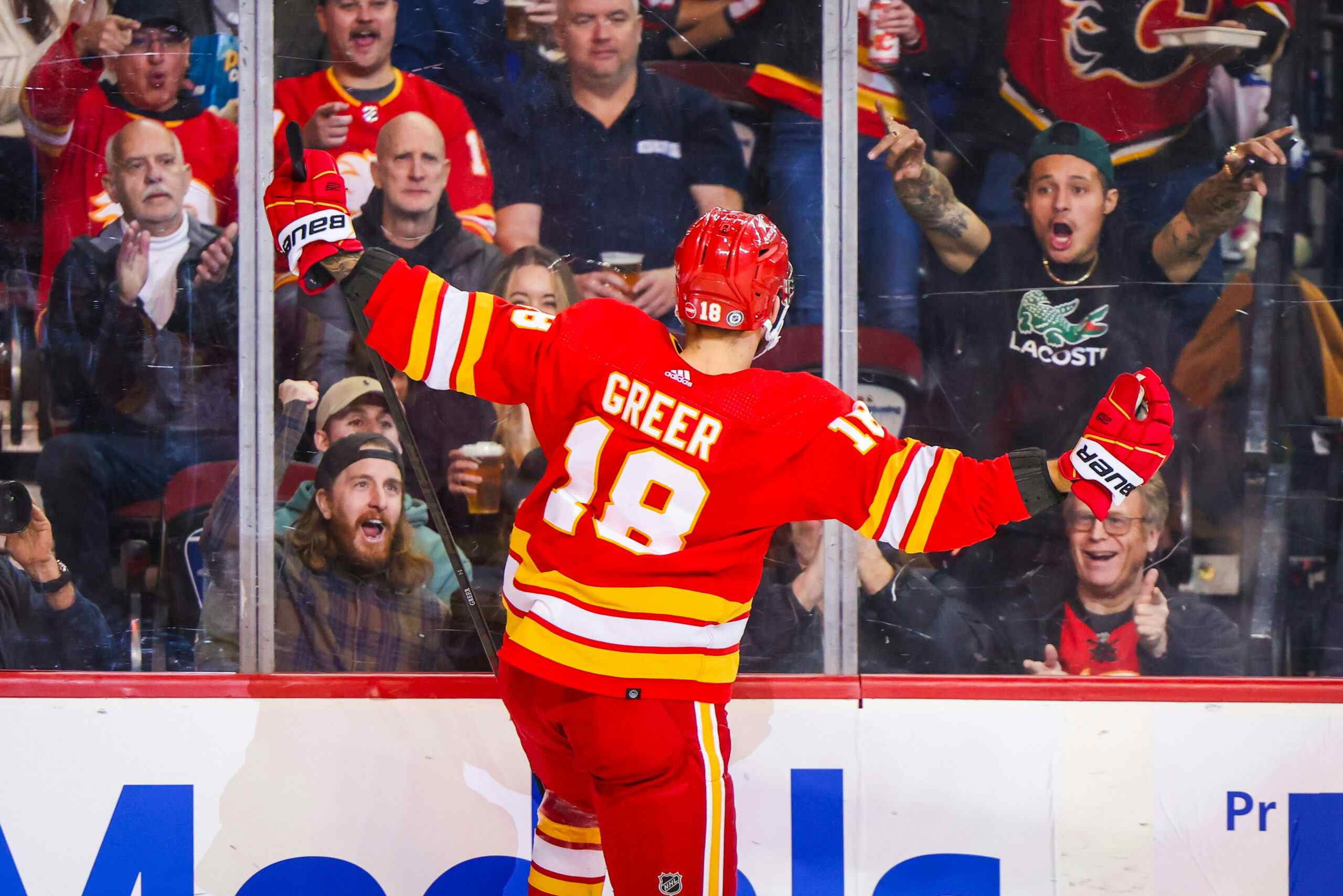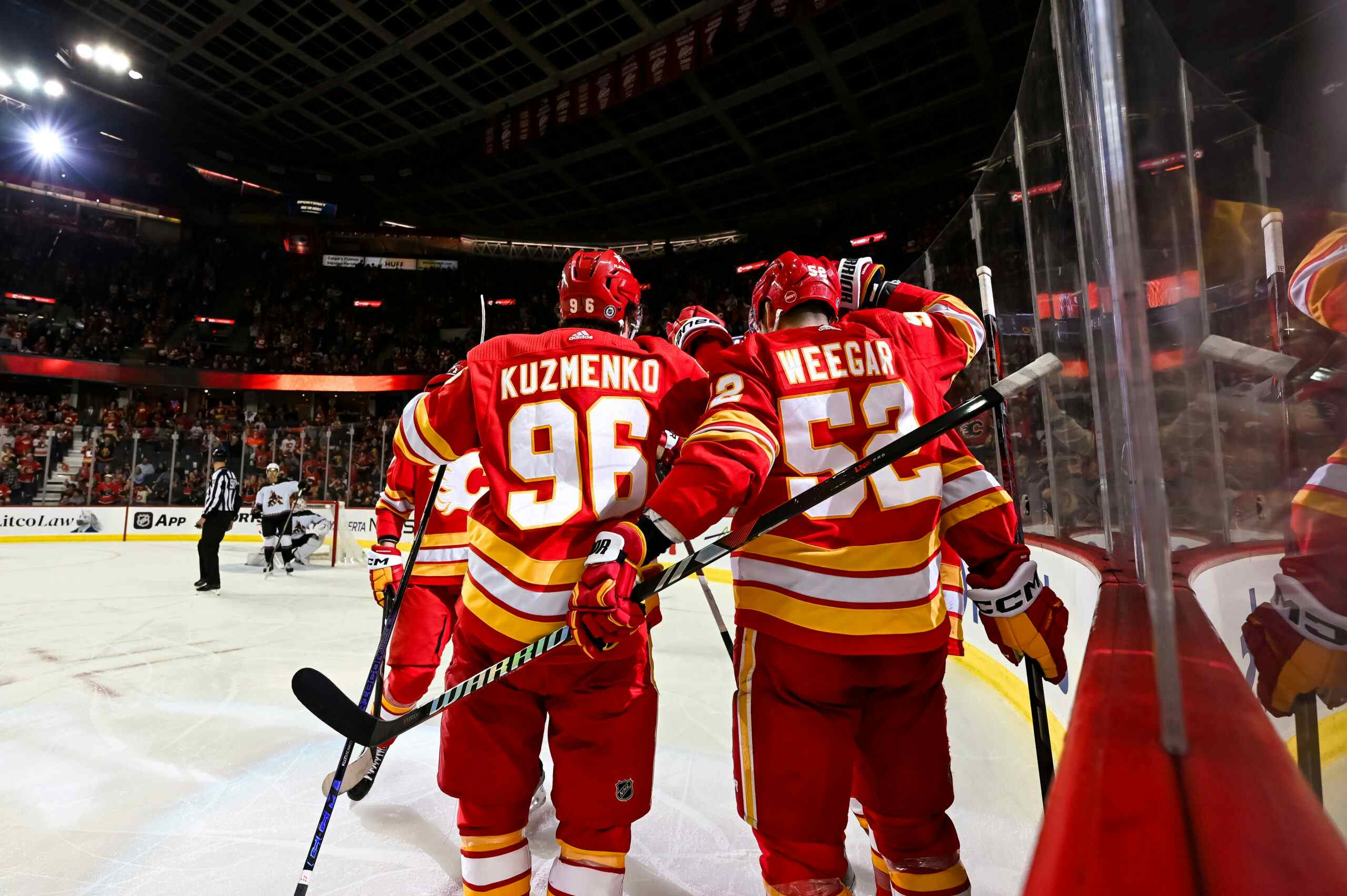Flames Penalty Differentials 2013
By Kent Wilson
10 years ago – pic via Resolute, wikimedia commons
Although we focus a lot on corsi/possession analysis here at FN when it comes to assessing players and teams, there are obviously othe metrics to take into account when evaluating talent/impact. One of those things which we don’t talk about too much is penalty differential, or the difference between a players penalties taken and drawn.
Like all measures of performance, there’s some randomness in penalties – sometimes the refs let ’em play and sometimes the zebras call everything. Sometimes a guy flips the puck over the glass by accident and sometimes the officials simply tag the wrong guy on a play. That said, the same folks tend to lead to lead the league every year in penalties drawn (and taken), give or take a name, so there’s a talent (as well as a circumstance) component to this measure.
Behindthenet.ca tracks penalties taken and drawn per hour of even strength ice time here. Sven Baertschi, Dennis Wideman, Mikael Backlund and Roman Horak lead the way while Mark Giordano, Alex Tanguay and Derek Smith pull up the rear.
We can go one step further and investigate what impact penalty differential has on wins for the team. According to some work done by Tom Tango recently, a penalty is worth about +/- 0.027 wins to an NHL team on average*:
The average NHL team scores an average of .606 PPG and allows .065 SHG, for a net of +.541 goals. They have 3.32 PP opportunities, therefore, per PP Opp, the net effect is +.163 goals. To convert goals to win is roughly 6 goals per win. So, that +.163 goals translates as .027 wins. That is, when a referee calls a penalty, he’s basically shifting the win expectancy by .027 wins.
*(of course, in particular, some penalties can cost or win a game depending on timing of the infraction and if the team on the man advantage scores. Say, a hooking call in overtime, for example.)
Meaning, for every extra penalty a player draws, he’s adding about 0.163 goals to a club’s goal differential. That would be a higher number for clubs with especially potent PP’s and lower for teams that shoot blanks, but let’s work with the average to keep things simple.
Penalty Differential and Wins
Anyways, here’s how things worked out for Flames players this year. The table features guys who played at least 100 minutes at ES and forecasts their penalty differential rates and win effect over an 82 game season.
| Player | GP | Ptake | Pdraw | diff/60 | Time on ice | Total diff | wins | diff/82 | goals/82 | wins/82 |
|---|---|---|---|---|---|---|---|---|---|---|
| Sven Baertschi | 20 | 0.5 | 1.6 | 1.1 | 234:09:00 | 4 | 0.12 | 18 | 2.87 | 0.47 |
| Dennis Wideman | 46 | 0.1 | 0.6 | 0.5 | 890:40:00 | 7 | 0.20 | 13 | 2.16 | 0.36 |
| Mikael Backlund | 32 | 0.7 | 1 | 0.3 | 426:39:00 | 2 | 0.06 | 5 | 0.89 | 0.15 |
| Roman Horak | 20 | 0.2 | 0.5 | 0.3 | 252:21:00 | 1 | 0.03 | 5 | 0.84 | 0.14 |
| Brian McGrattan | 19 | 0.4 | 0.8 | 0.4 | 136:23:00 | 1 | 0.02 | 4 | 0.64 | 0.11 |
| Lee Stempniak | 47 | 0.4 | 0.6 | 0.2 | 671:55:00 | 2 | 0.06 | 4 | 0.64 | 0.11 |
| TJ Brodie | 47 | 0.3 | 0.4 | 0.1 | 827:06:00 | 1 | 0.04 | 2 | 0.39 | 0.06 |
| Matt Stajan | 43 | 1.1 | 1.2 | 0.1 | 642:38:00 | 1 | 0.03 | 2 | 0.33 | 0.06 |
| Curtis Glencross | 40 | 0.6 | 0.7 | 0.1 | 574:54:00 | 1 | 0.03 | 2 | 0.32 | 0.05 |
| Steve Begin | 36 | 0.3 | 0.5 | 0.2 | 239:29:00 | 1 | 0.02 | 2 | 0.30 | 0.05 |
| Maxwell Reinhart | 11 | 0.4 | 0.4 | 0 | 138:29:00 | 0 | 0.00 | 0 | 0.00 | 0.00 |
| Brett Carson | 10 | 0 | 0 | 0 | 106:19:00 | 0 | 0.00 | 0 | 0.00 | 0.00 |
| Cory Sarich | 28 | 0.3 | 0.2 | -0.1 | 387:30:00 | -1 | -0.02 | -2 | -0.31 | -0.05 |
| Tim Jackman | 42 | 1.3 | 1.1 | -0.2 | 315:00:00 | -1 | -0.03 | -2 | -0.33 | -0.06 |
| Jiri Hudler | 42 | 1 | 0.8 | -0.2 | 600:13:00 | -2 | -0.05 | -4 | -0.64 | -0.11 |
| Chris Butler | 44 | 0.6 | 0.4 | -0.2 | 663:06:00 | -2 | -0.06 | -4 | -0.67 | -0.11 |
| Roman Cervenka | 39 | 0.8 | 0.5 | -0.3 | 448:34:00 | -2 | -0.06 | -5 | -0.77 | -0.13 |
| Blair Jones | 15 | 1.2 | 0.8 | -0.4 | 151:12:00 | -1 | -0.03 | -6 | -0.90 | -0.15 |
| Mike Cammalleri | 44 | 0.9 | 0.6 | -0.3 | 638:44:00 | -3 | -0.09 | -6 | -0.97 | -0.16 |
| Derek Smith | 22 | 1.2 | 0.5 | -0.7 | 260:51:00 | -3 | -0.08 | -11 | -1.85 | -0.31 |
| Alex Tanguay | 40 | 0.9 | 0.3 | -0.6 | 601:06:00 | -6 | -0.16 | -12 | -2.01 | -0.33 |
| Mark Giordano | 47 | 1.2 | 0.7 | -0.5 | 857:58:00 | -7 | -0.19 | -12 | -2.03 | -0.34 |
As you can see, the effect is rather muted when it comes to individual players, although things get interesting at the margins. For example, Sven Baertschi’s rate of +1.1 penalties/60 minutes translates to an extra three goals (or half a win) per 82 games just by way of his penalty differential alone. On the other end, Alex Tanguay, Mark Giordano and Derek Smith would cost the Flames a win over a full schedule given their negative differential rates from this past season.
Obviously for this to matter at all, the true impact would have to be cumulative; ie, you’d need to have a vast majority of players taking or drawing a lot of penalties for penalty differential to have an impact and/or a couple of guys who take or draw a ton by themselves.
Like faceoff win percentage, a lot of players seem to settle into a big, squishy middle and the effect of individual differentials are too small (given the average impact on goals) to be worth talking about. That said, like faceoff percentage, there’s a always a few guys who are way out in front (or behind) of the field to the degree that they tip the scales by themselves.
Of course, if your players tend to draw more penalties than they take, that also increases the chances the bad guys will take an infraction at a key moment in the game, as noted in the *aside above. That’s not something we can account for in an exercise like this, but it’s potentially worth a lot in practice.
Discussion
For the Flames there aren’t a lot of surprises. Alex Tanguay shouldn’t be pulling up the rear given his skill set, but his high penalty total may be another indication he shouldn’t really be taking on other big guns anymore. Mark Giordano’s penalty differential is partially an artifact of his highly diffcult circumstances: most defenders playing against star players are in the red by this measure. I also wouldn’t bet on Brian McGrattan being in the black over a full season.
Dennis Wideman’s high differential is a pleasant surprise. It’ll be interesting to see if he can replicate it. Sven Baertschi looks like the kind of player who is going to draw a lot of calls thanks to his skill level and tenacity. Here’s hoping he can actually improve that number as he develops. Matt Stajan was in the black, but oddly took the second highest minors per hour on the club behind only Giordano and finished the season with 13 minors (!).
Overall, this wasn’t a big issue for the Flames this year. They drew 5 more penalties than they took as a team for a marginally positive net effect.
Still, something to keep in mind.
Recently Around the Nation
Jonathan Willis talks about the trade value of Ales Hemsky in response to Craig Button’s recently claim there is no market for the oft-injured winger:
If the Oilers somehow couldn’t get a second-round pick for a guy making $2.5 million who scores like Hemsky, than they may as well fire the general manager now because he’s hopeless.
Recent articles from Kent Wilson






